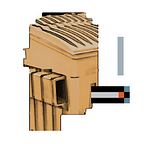Cryptoart: Why not ScreenShot?
Because you can’t taste THE JUICE if you don’t own THE GOODS.
This post seeks to answer the question: “Why spend on cryptoart, when I can take a screenshot (or make my own gif)?”
(If you get lost, I suggest a quick review of Devin Finzer’s “NFT Bible,” which is both accessible & comprehensive)
TRADITIONAL ART: BUYER CAN HIDE THE GOODS
- The highest priced painting EVER is hidden in a boat.
In the traditional (physical) art world: when you buy an artwork, you get two associated rights: The Right to Transfer & The Right to Display. The Right to Transfer means you can re-sell it, with appreciation if you select wisely. The Right to Display means you can choose whether or not the public can enjoy access to the work. In traditional art, if you wanted to buy and hide artwork, you could. For example, Salvator Mundi by DaVinci — the highest selling artwork ever — has been hidden away in Saudi crown prince MBS’s yacht for years.
In addition, traditional artwork suffers from an authentication problem, which I have discussed in a prior article “Trust is Required in Cryptoart.” Properly authenticating a traditional painting can take years and hundreds of thousands of dollars.
CRYPTOART: BUYER CAN’T HIDE THE GOODS
Cryptoart changed this dynamic between artcollector and the public, because the buyer no longer gets the exclusive Right to Display…
